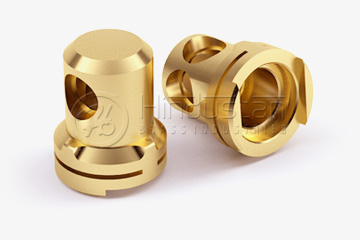In the world of maritime operations, efficiency, safety, and precision are critical. As the demands on vessels and offshore platforms continue to grow, so does the need for reliable and robust equipment. Among the most vital systems powering the modern marine industry is hydraulic equipment. From maneuvering massive ships to controlling essential on-board systems, hydraulic equipment plays a crucial role in ensuring smooth, efficient, and safe operations at sea. This blog delves into the significance of hydraulic systems in marine equipment and their essential role in maritime industries.
What is Hydraulic Equipment?
Hydraulic equipment relies on fluid power to perform various tasks. It operates on the basic principle of using pressurized fluid, typically oil, to generate force and motion. This mechanism enables the movement and operation of heavy machinery, even under extreme conditions, making it perfect for marine environments where reliability and durability are paramount.
Key Components of Hydraulic Systems
- Hydraulic Pumps: These are the heart of the hydraulic system, responsible for converting mechanical energy into hydraulic energy. In marine settings, pumps are used to drive everything from steering systems to deck cranes.
- Hydraulic Cylinders: Also known as actuators, these devices convert hydraulic energy into linear motion, enabling lifting, pushing, or pulling functions.
- Valves: Hydraulic valves control the flow and pressure of hydraulic fluid. They ensure that the hydraulic system operates safely and efficiently by directing fluid where it’s needed.
- Hydraulic Motors: Similar to cylinders, these convert hydraulic energy into rotational motion. They are used in various marine applications, such as winches and propeller systems.
Role of Hydraulic Equipment in Marine Applications
Hydraulic systems have become indispensable in the marine industry, thanks to their versatility and capability to operate under extreme environmental conditions. Here are some key areas where hydraulic equipment plays a critical role:
1. Steering Systems
Ship steering requires precise control, especially when navigating narrow passages or during docking. Hydraulic steering systems offer the high force necessary to move the rudder, allowing for smooth and responsive ship handling.
2. Winches and Cranes
In marine applications, winches and cranes are essential for lifting heavy cargo, anchors, or even rescue operations. Hydraulic winches provide superior power and torque, making them ideal for handling loads in challenging sea conditions. Similarly, cranes on ships or offshore platforms rely on hydraulic systems to lift and move cargo efficiently.
3. Anchor Handling Systems
Anchoring large vessels, especially in rough seas, requires significant force and precision. Hydraulic systems ensure that anchors are deployed and retrieved efficiently, with enough power to handle the harsh marine environment.
4. Stabilizers and Thrusters
Modern ships are equipped with hydraulic stabilizers and thrusters to improve stability and maneuverability, especially in challenging weather conditions. Stabilizers reduce the rolling motion of ships, while thrusters assist in precise movements, like docking or turning, without using the main propulsion system.
5. Hydraulic Power for Offshore Platforms
Beyond ships, hydraulic systems are integral to the operation of offshore platforms, including oil rigs and wind turbines. They power essential equipment such as jack-up rigs, riser tensioners, and blowout preventers, ensuring safe and reliable operations in the demanding offshore environment.
Advantages of Hydraulic Equipment in Marine Applications
- High Power Density: Hydraulic systems can generate a significant amount of power relative to their size, making them ideal for applications where space is limited, such as on ships.
- Durability and Reliability: Marine environments are harsh, with saltwater, high humidity, and temperature variations. Hydraulic equipment is designed to withstand these challenges and provide consistent performance over time.
- Precision Control: Hydraulics allow for precise control of motion and force, which is critical in operations like steering and cargo handling.
- Flexibility: Hydraulic systems can be used in a wide range of applications, from small vessels to large industrial ships and offshore platforms.
Innovations in Hydraulic Marine Equipment
With the push toward greener technologies and increased efficiency, hydraulic equipment manufacturers are constantly innovating to meet the demands of the modern marine industry. Recent advancements include:
- Electro-hydraulic systems, which combine the benefits of electric and hydraulic power to improve energy efficiency and reduce emissions.
- Smart hydraulic systems, integrated with sensors and IoT (Internet of Things) technology, allow for real-time monitoring and predictive maintenance, reducing downtime and ensuring optimal performance.
The Future of Hydraulic Equipment in Marine Applications
As the marine industry moves toward automation and increased sustainability, hydraulic equipment will continue to evolve. New materials, energy-efficient designs, and advanced control systems will likely dominate the future of hydraulic systems in marine operations. Moreover, with stricter environmental regulations, manufacturers are focusing on developing eco-friendly hydraulic systems that reduce oil leaks and energy consumption.
Conclusion
Hydraulic equipment forms the backbone of many marine operations, offering unmatched power, control, and reliability. From steering ships to lifting massive loads, these systems play a crucial role in ensuring the safety and efficiency of maritime activities. As technology advances and the marine industry evolves, hydraulic systems will continue to adapt, remaining a vital component of modern maritime operations.
Whether you’re managing a vessel, overseeing an offshore platform, or simply interested in marine technology, understanding the importance of hydraulic equipment is essential for navigating the challenges of the sea.









